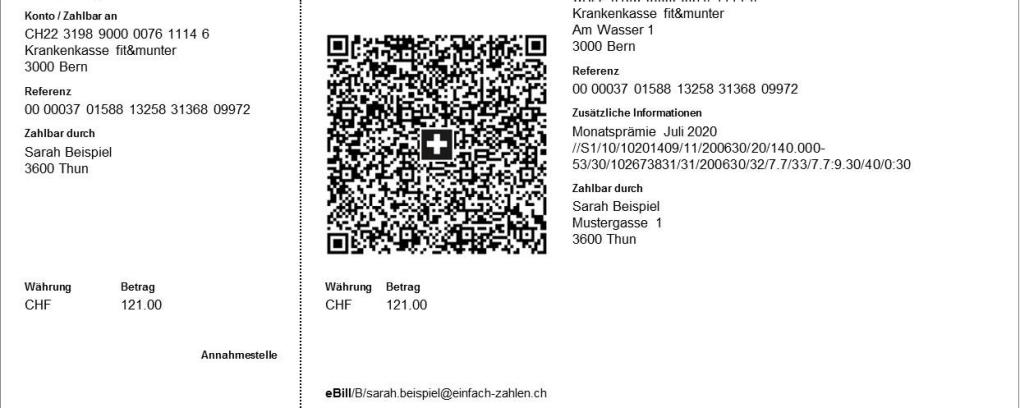
The project, overseen by market infrastructure provider SIX, will enable bill recipients to trigger payment with just a few clicks on a smartphone. Incorrect entries of payment information will be displayed directly in online banking and business software, and can be immediately corrected, saving time and investigation orders. The Swiss banks will update their mobile banking and e-banking solutions in time for 30 June 2020, to support QR-bill payments.
„The QR-bill will modernize Swiss payment transactions. From 30 June 2020, invoice recipients will be receiving their first QR-bills instead of the traditional payment slips. You can recognize the QR-bill by the Swiss QR Code, which contains all the information needed for easy, automatic and efficient payment.”, according to a press release.

The QR-bill will be replacing the current payment slips on a gradual basis, which means that consumers and companies can, until further notice, make payments using either the traditional payment slips or the new QR-bill. Like the payment slips, the QR-bill comprises a payment section and a receipt. The Swiss QR Code in the middle of the payment section contains the information that is also visible in text form on the invoice. As before, the perforation allows the payment section and receipt to be separated from the invoice.
Invoice recipients have a range of options when it comes to paying a QR-bill:
Via e-banking – Open your e-banking application, scan the Swiss QR Code with the QR reader or integrated camera and click to trigger payment. When paying with the QR-bill, you still have the option of typing in the payment information.
Via mobile banking – Open the mobile banking app on your smartphone, scan the Swiss QR Code with the QR reader function and tap the screen to trigger payment.
By mail -The QR-bill also functions as a payment slip (payment section and receipt) and can be paid at, for example, the post office counter or cash deposit machine or sent to the bank as a payment order in an envelope.
Alternatively, as a company using business software.
Invoice recipients can scan the QR code quickly and easily. One click and payment is triggered automatically. You also no longer have to type the account and reference numbers, which makes payment faster and reduces the potential for error. Another benefit is the standardized format: Now there is only one document instead of seven different payment slips as before.
For invoice issuers (companies), too, the entire invoicing process will be faster, more efficient and, in the medium term, more cost-effective thanks to structured payment details, less manual work, the reduced potential for error and simplified debtor management.
In addition, QR-bills can be created by the invoice issuers themselves and printed on white, perforated paper. QR-bills will offer a range of benefits for all market participants and the Swiss economy as a whole and make an important contribution to Switzerland’s digitalization strategy.
Invoice recipients have the choice
Invoice recipients can reap the benefits of QR-bills and pay digitally. But no one will be forced to change their payment habits because all the usual payment methods – whether by mail or at the bank – will still be possible. The traditional payment slips and QR-bill can be used in parallel until further notice.
Patrick Graf, Chair of the SIX Interbank Clearing Ltd Board of Directors and Member of the Executive Board of PostFinance: “The payment slips have been around for decades. Phasing out a Swiss ‘cultural asset’ like this is something that the Swiss financial center would do only with due respect and caution. We’re not taking anything away from consumers, merely offering the QR-bill as an additional means of payment. So from 30 June 2020, people will also be able to make digital payments if they wish.”
The Swiss banks will update their mobile banking and e-banking solutions in time for 30 June 2020, to support QR-bill payments. This means that consumers don’t need to do anything except wait for further information from their bank. Companies with hardware and software solutions, however, will have to update their creditor and payment software as well as their reader devices and scanning platforms to enable the receipt and payment of QR-bills.
Joint development of the QR-bill
SIX operates, develops and digitalizes payment transactions for Switzerland as a financial center and is responsible for developing and launching the new QR-bill. The QR-bill was developed by SIX in collaboration with banks and software partners and in close consultation with representatives from the corporate world and private customers. The market launch, too, of the QR-bill is a joint endeavor of the financial center, business, state and consumer representatives.
Marco Menotti, Head of Banking Services and Member of the Executive Board of SIX: “The QR-bill was jointly developed by SIX and all the relevant players in the Swiss financial center and designed to meet broad market requirements. The needs of all the market players were identified and are reflected in the new QR-bill. This will ensure that it receives widespread approval and support, an important criterion for becoming established as the new invoicing standard.”
Banking 4.0 – „how was the experience for you”
„To be honest I think that Sinaia, your conference, is much better then Davos.”
Many more interesting quotes in the video below: